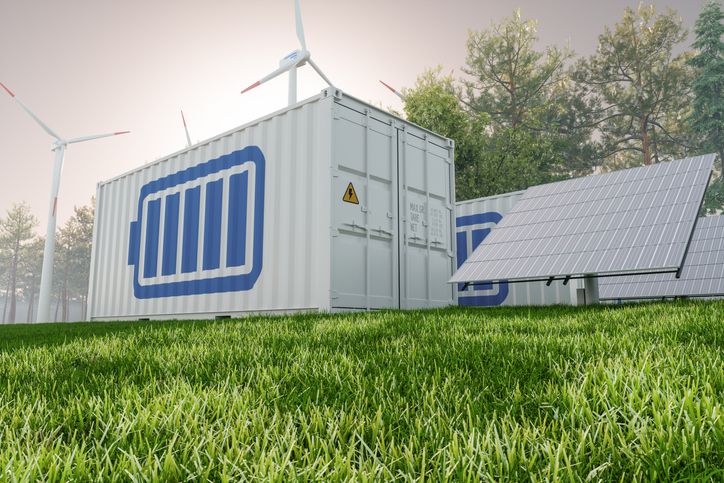Electricity storage systems are becoming increasingly important for achieving the energy transition. "They are the crucial building blocks to keep grids and production stable", says Markus W. Voigt, CEO of aream Group. "Storage can be used to increase renewable capacity even if no new plants are built."
Electricity storage systems are used to store electricity. "The dark doldrums lose their horror when sufficient storage capacity is installed", says Voigt. In addition, however, storage facilities also perform important tasks within the grid infrastructure. "The storage facilities can also compensate for voltage peaks", says Voigt. "In this way, the grid frequency of 50 hertz can be kept stable." A larger number of installed storage units within the grids would ensure that the grids run much more stably overall and require fewer interventions. This increases the efficiency of the grids and helps reduce operating costs.
More important to increasing capacity is storing electricity during overloads. "Until now, plants have been shut down when more is produced than the grid can carry", Voigt says. A sunny, high-wind day, as the opposite of a dark doldrums, ensures that a large amount of power generation capacity remains unused. "To avoid overload, grid operators regulate plants to about 60 percent of their capacity", Voigt says. "In extreme cases, the plants can also be shut down completely, and the electricity is not produced at all."
Simply avoiding these curtailments can already significantly increase the amount of green power available. "Exact figures are difficult to come by, but the German Federal Network Agency assumes that around three percent of electricity from renewables was curtailed in 2019", says Voigt. "However, in view of ever-increasing demand, it is negligent to give electricity away."
At the same time, storage facilities are currently still quite expensive and rather modest in size. In Bavaria, the largest battery storage system for electricity from a photovoltaic system just went online. "This has a capacity of 750 kWh and cost around 500,000 euros", says Voigt. "Scaled to a 10 MW park, the total investment increases to about five million euros." At the same time, the development of more efficient storage is progressing, so prices will drop in the future. "Nevertheless, storage solutions are already interesting investments today, or at least in the near future", says Voigt. "They allow wind or solar farm operators to plan better and make full use of production capacity." In addition, electricity can be fed into the grids in this way even in times of tight supply at a then higher market price, and the excess generated can be sold at a profit.
"It was the Renewable Energy Sources Act that helped green electricity achieve its breakthrough", says Voigt. Now it's time to continue the success story with storage solutions. "It's important that incentives work in a targeted way and are no longer necessary after a certain period of time", Voigt says. That has worked brilliantly so far with renewables. "A lot of private capital has been activated alongside government money and channeled into the relevant technologies", Voigt says. This has ensured innovation, growth and economies of scale, so that new wind and photovoltaic plants now manage without subsidies. "This should also be the goal for storage technologies", Voigt says.
PRESSEKONTAKT:
Leandra Kiebach
T: +49 (0)211 30 20 60 4-2
E: lk@aream.de
